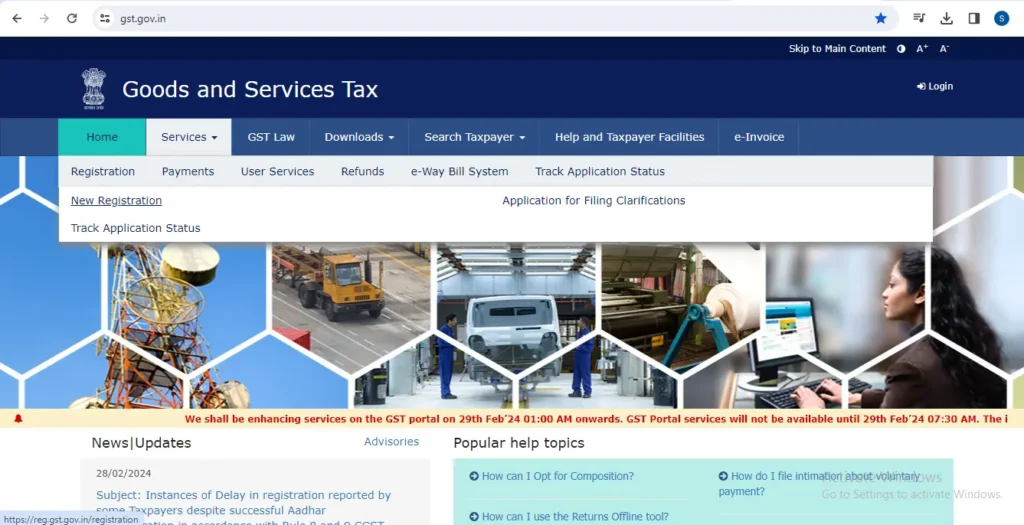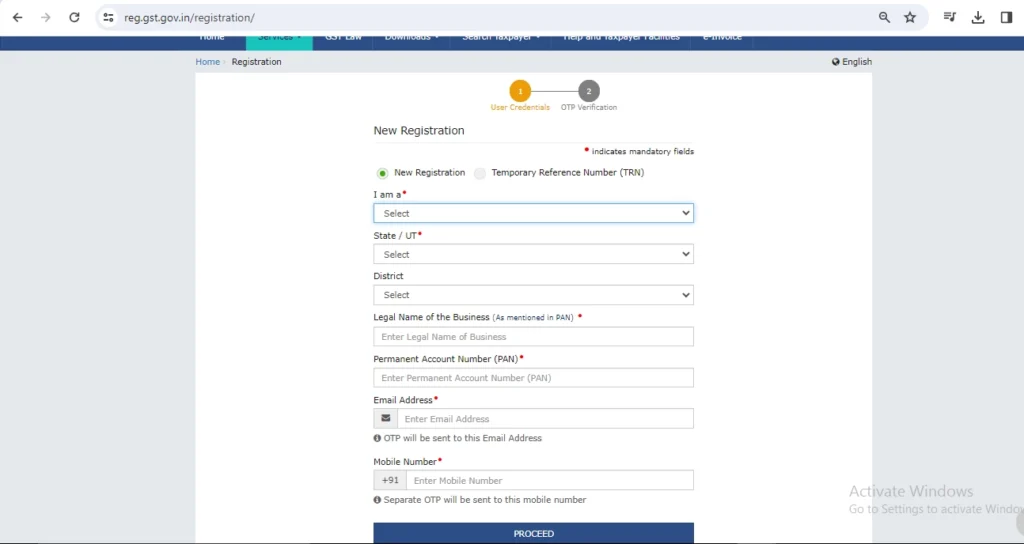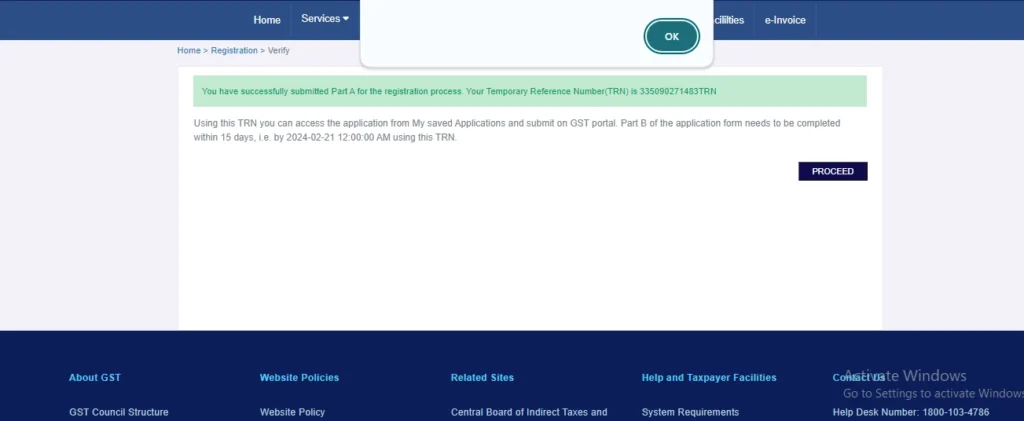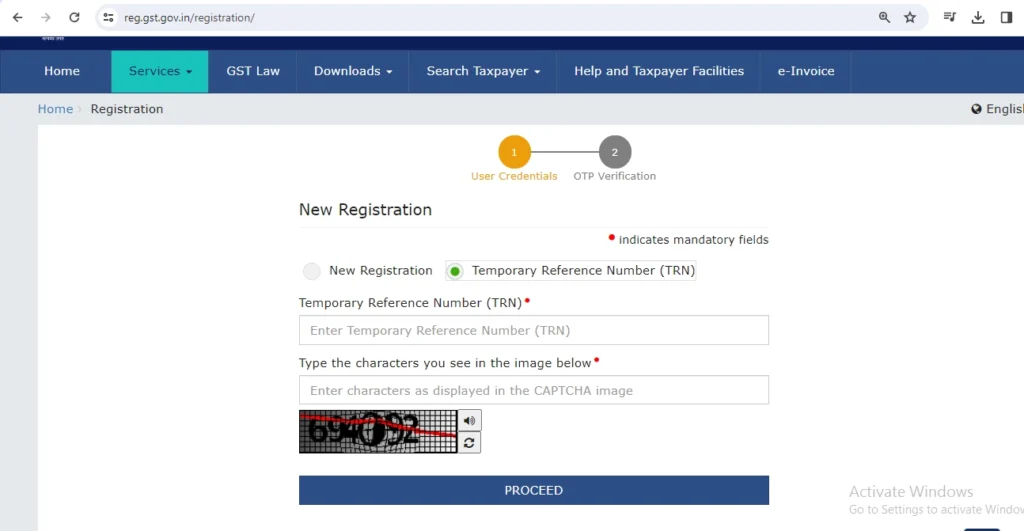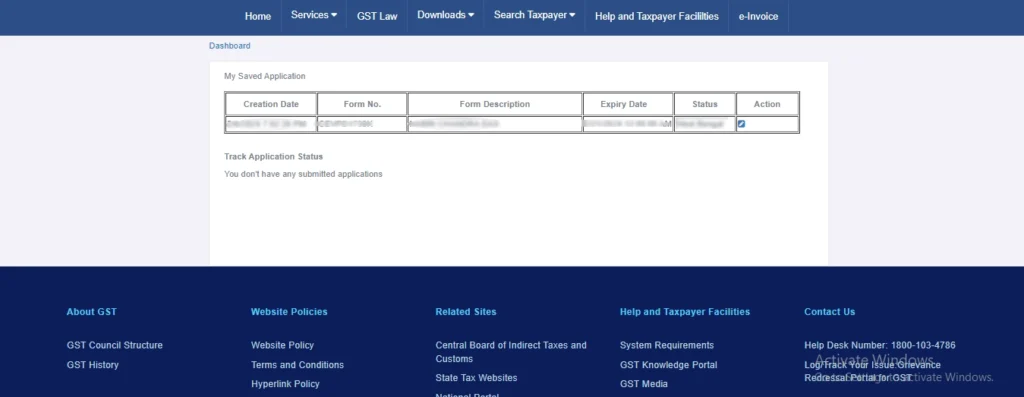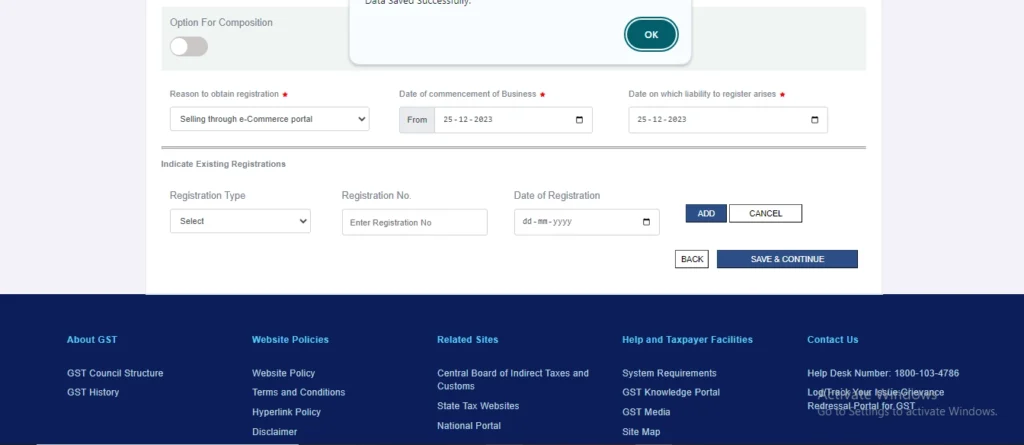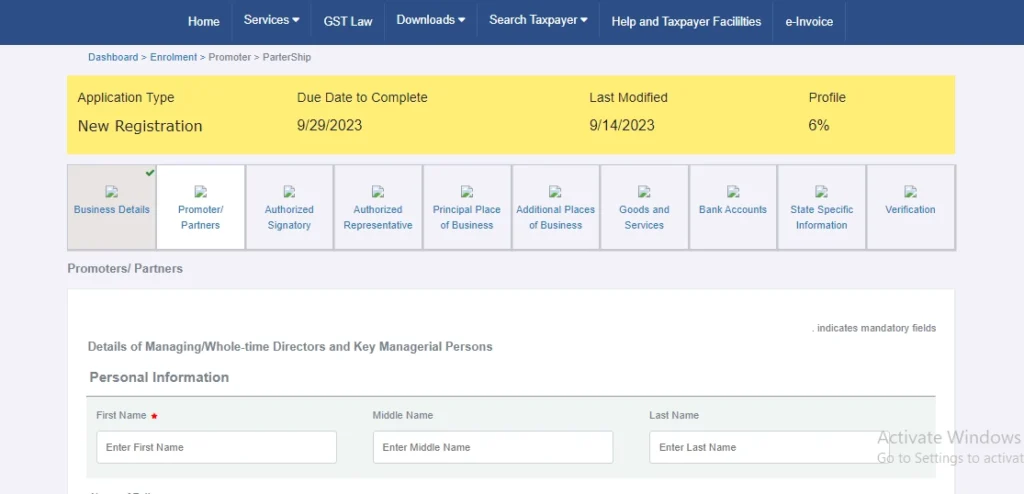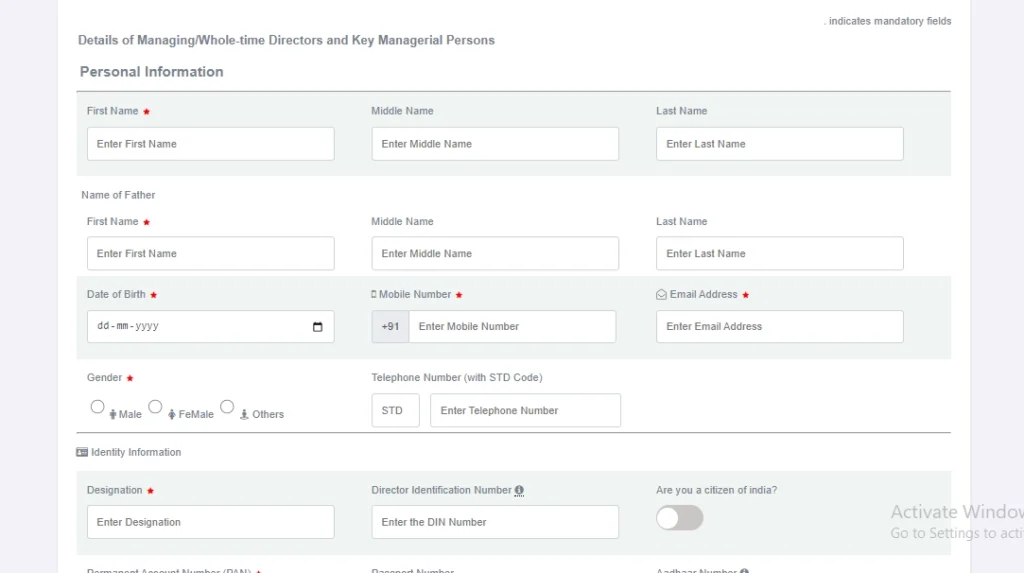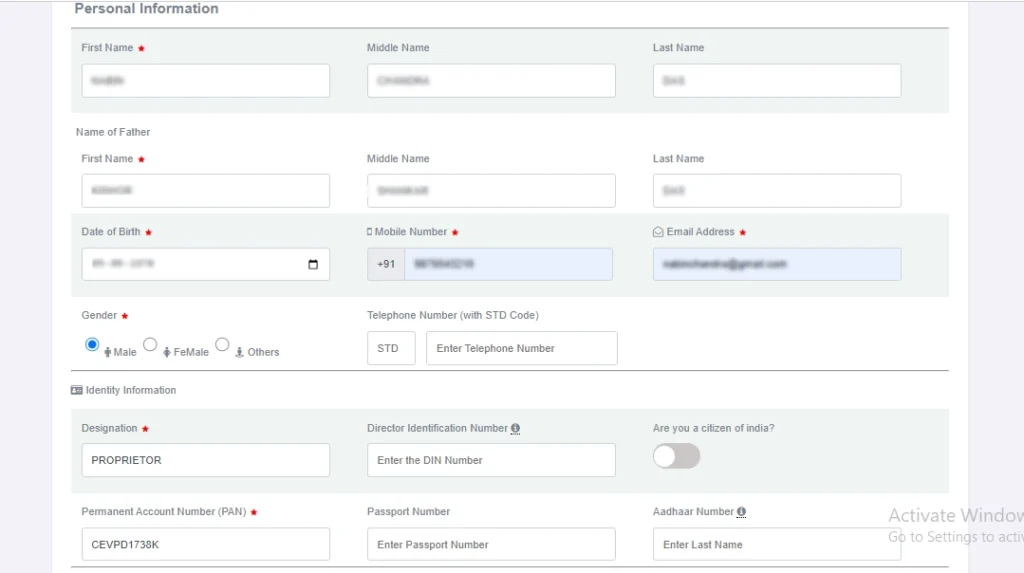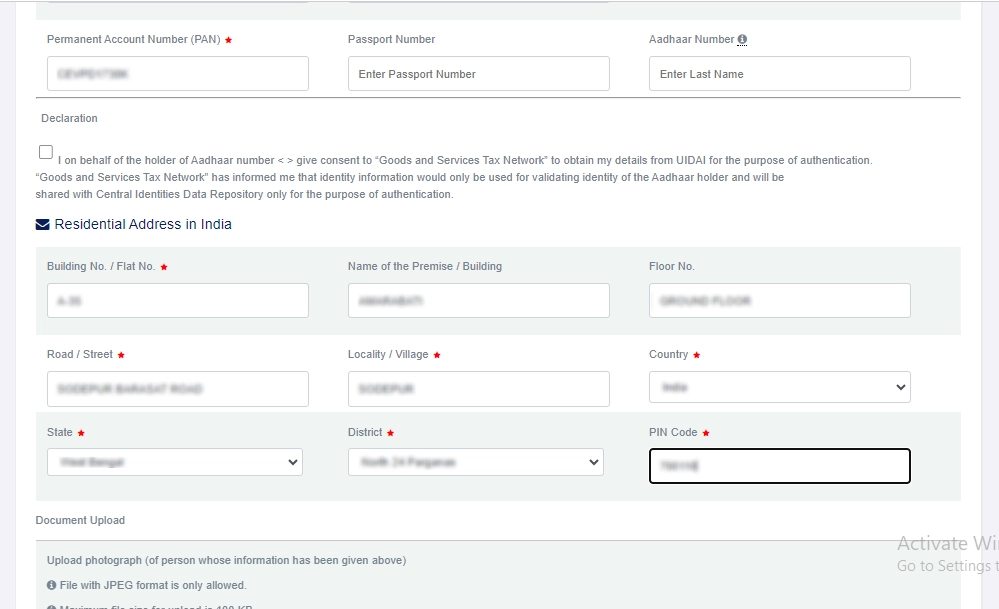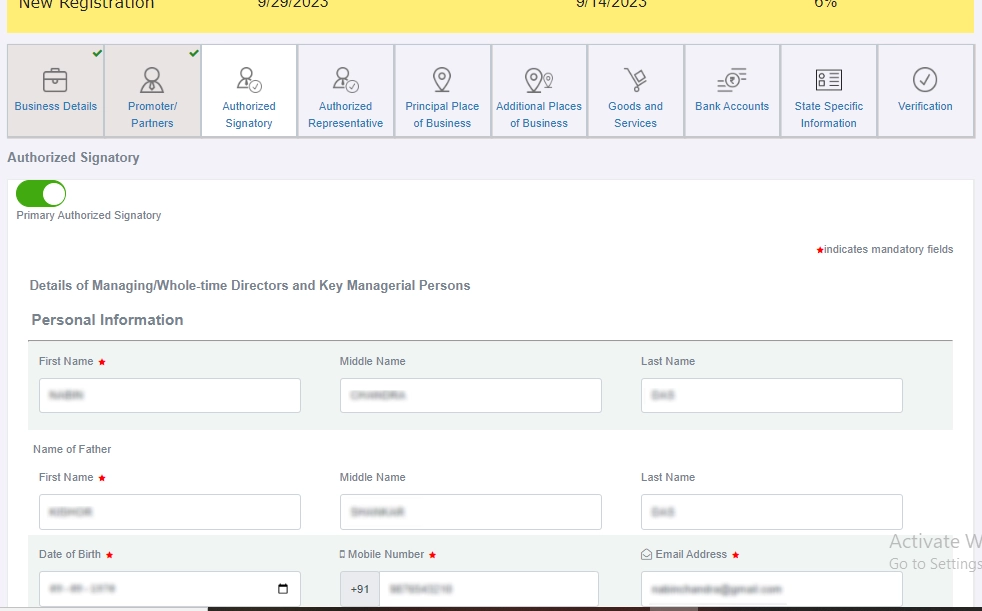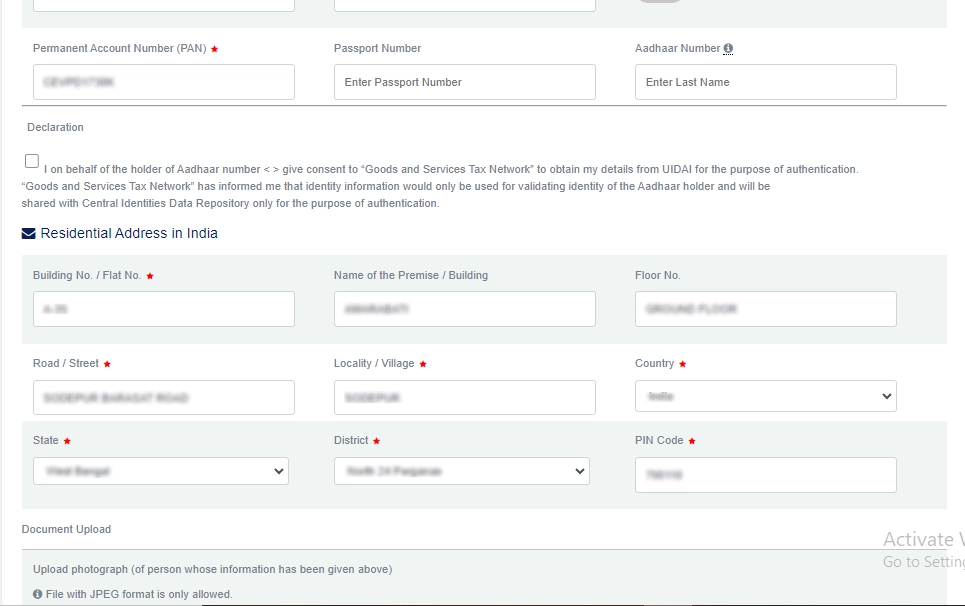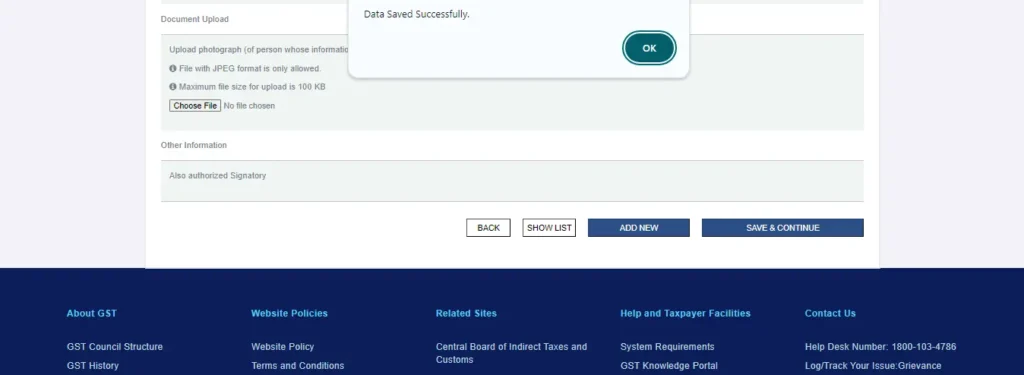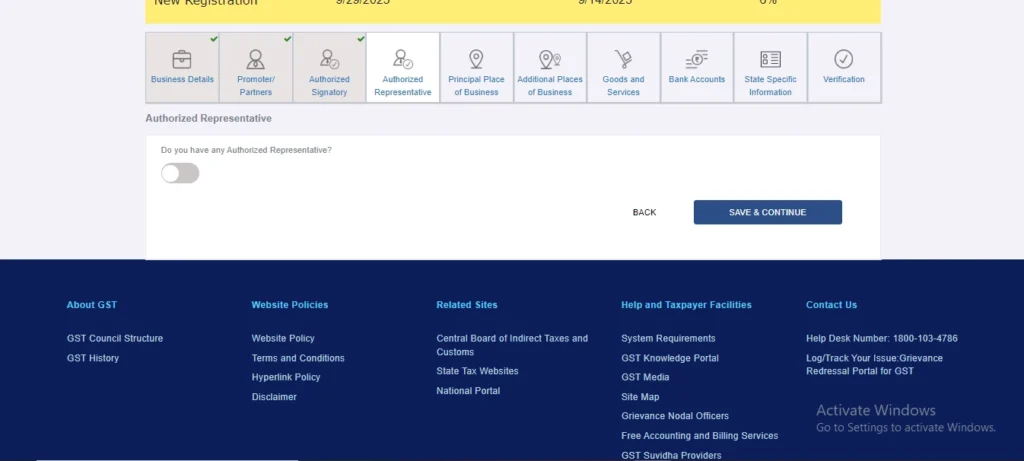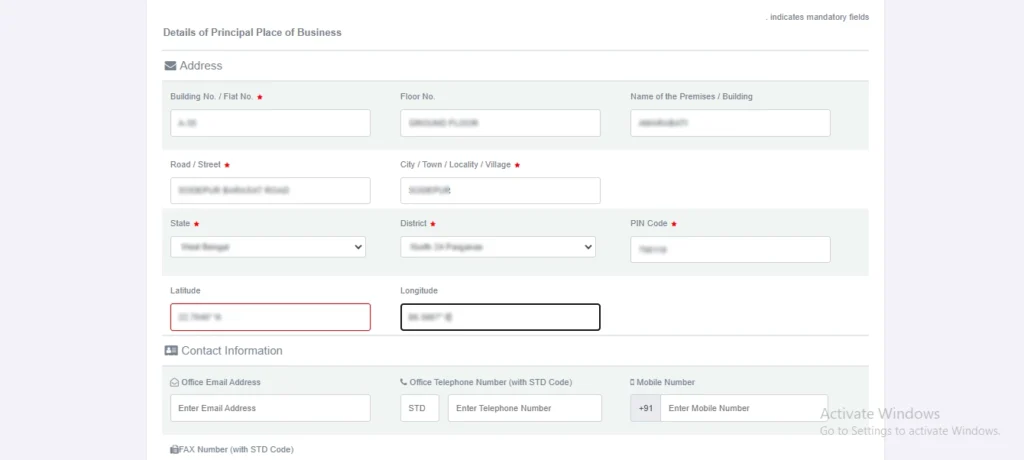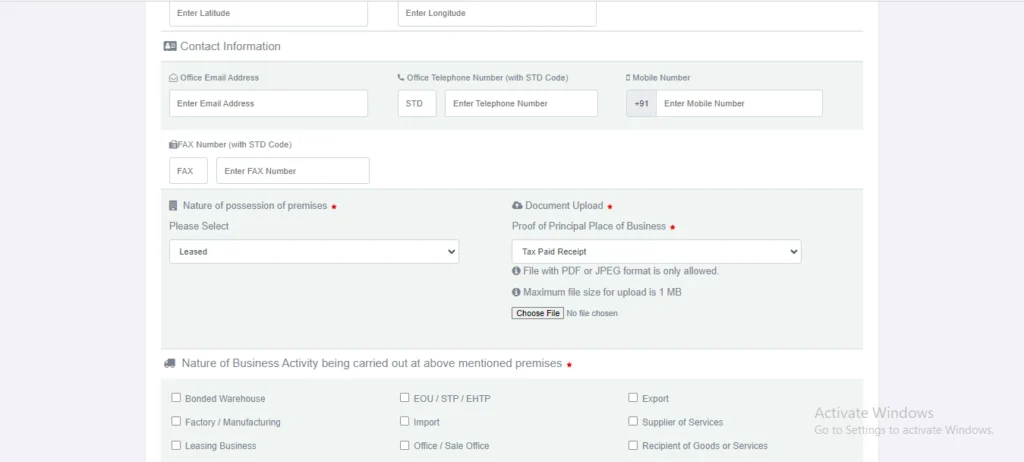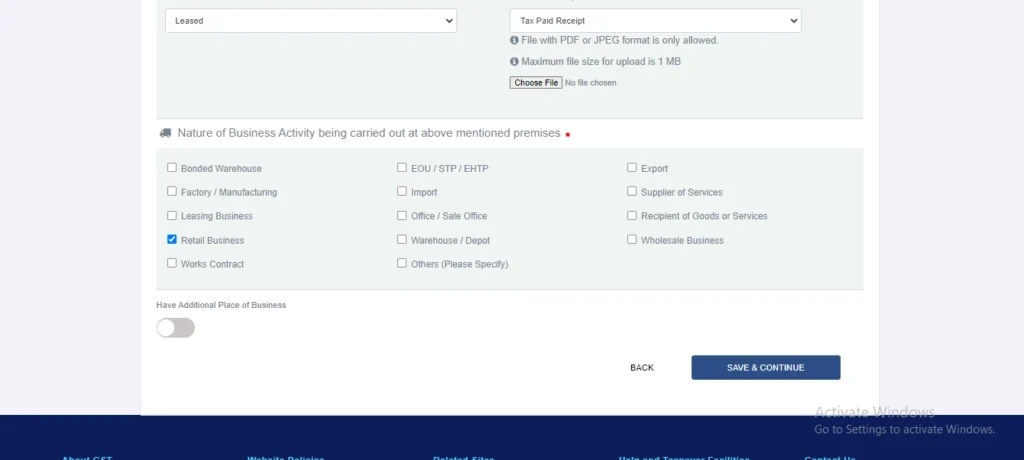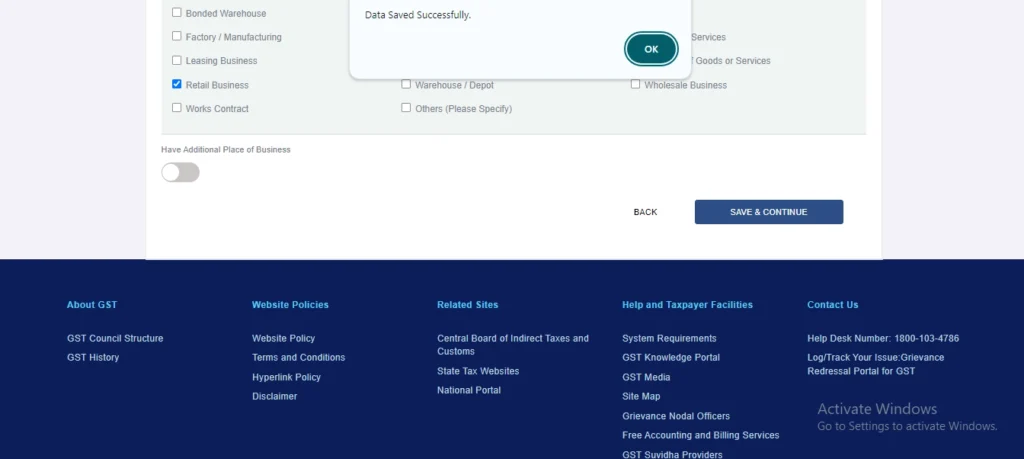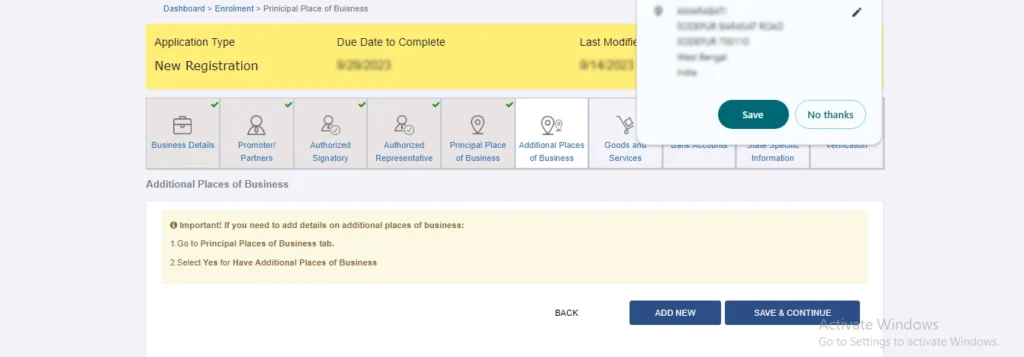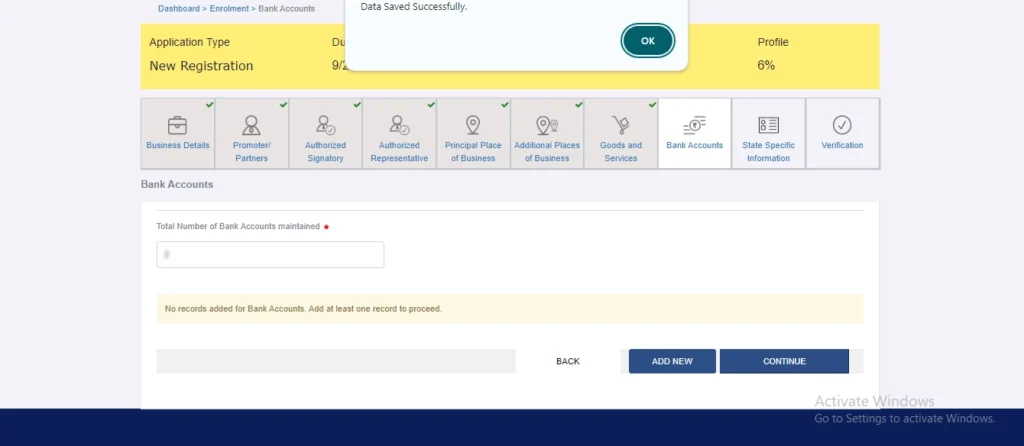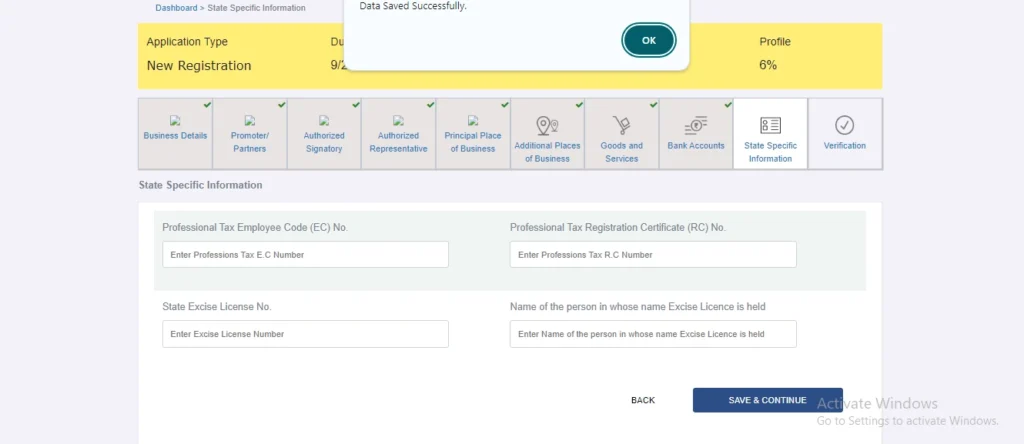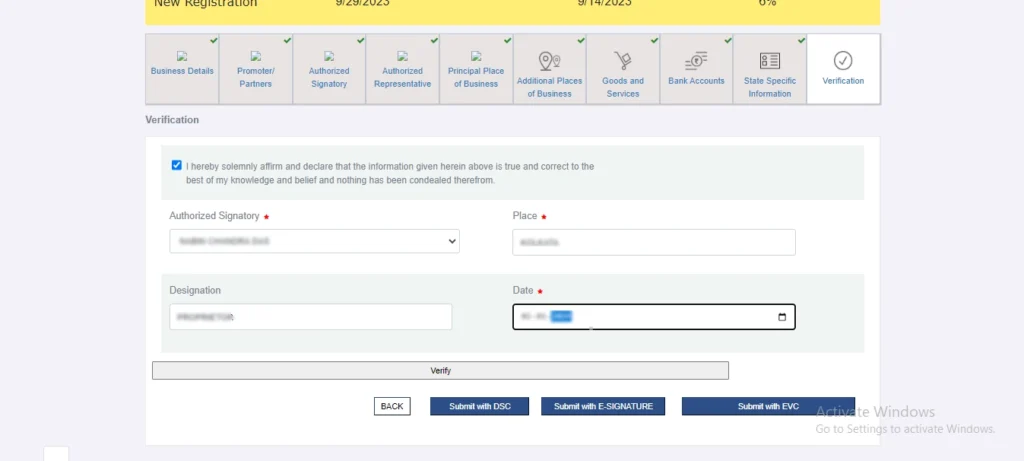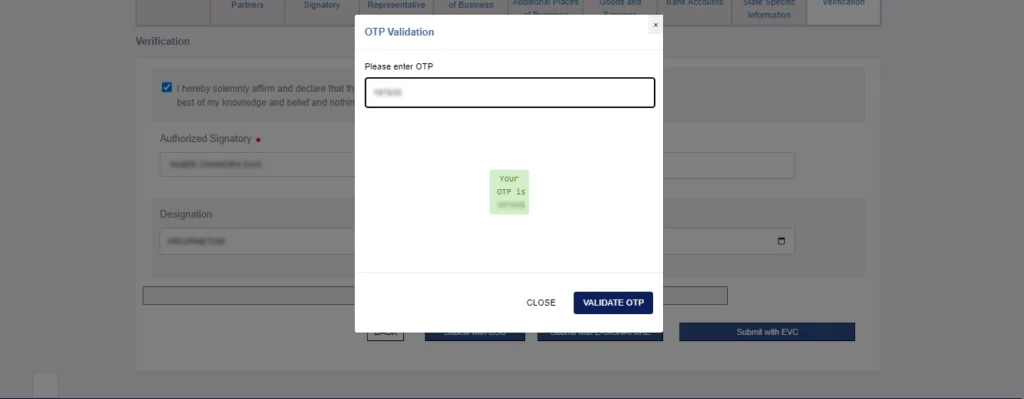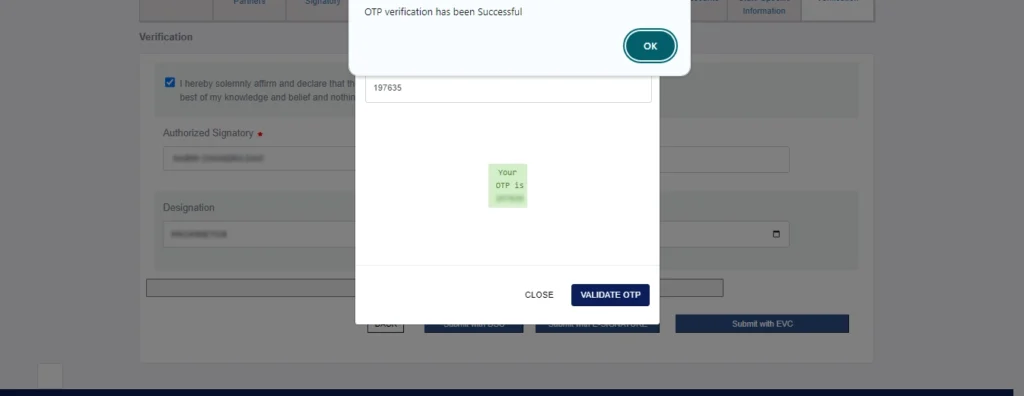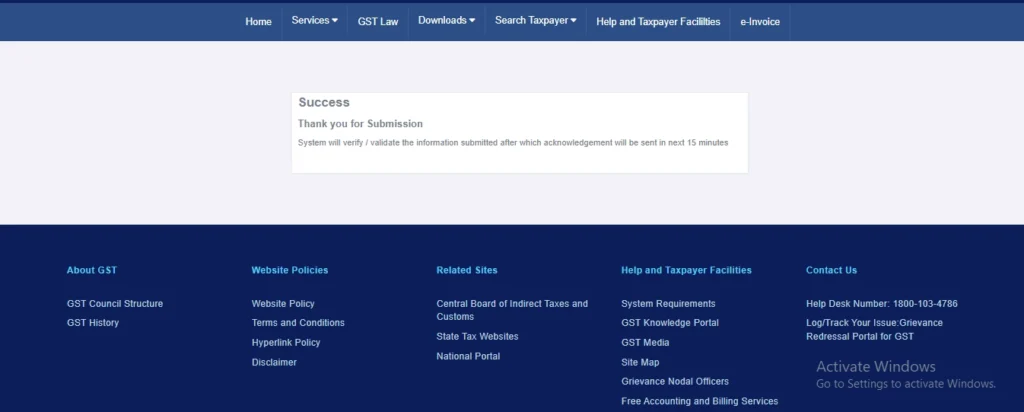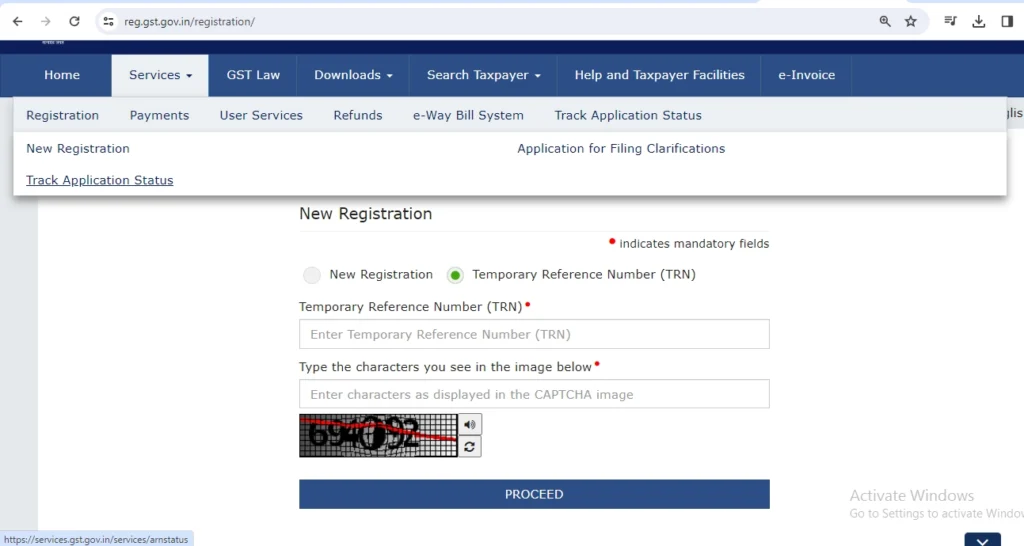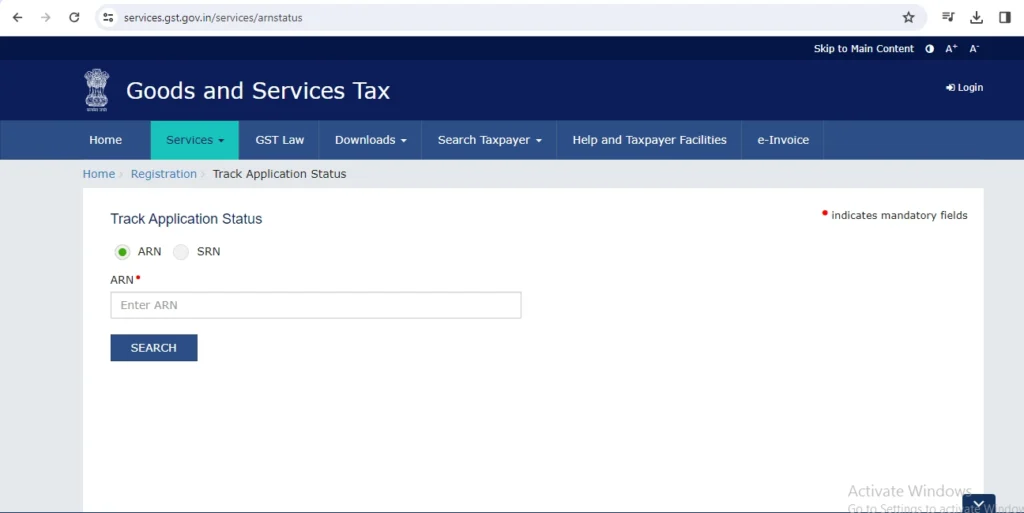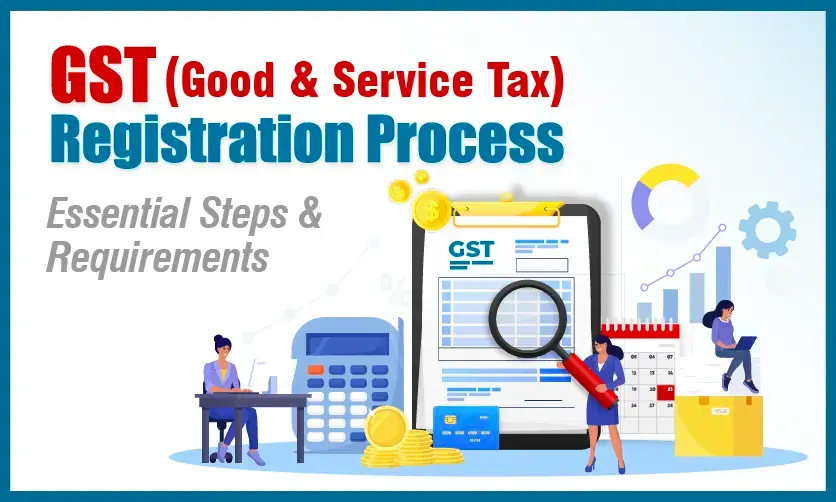
GST Registration Process: Steps, Requirements, Status Checks, Benefits
The introduction of the Goods and Services Tax (GST) tax system in India brings lots of transformation in the indirect tax structure. The core component of this is the GST registration process for businesses to become a part of this transformative regime.
To make the complete process of new registration of GST easy to understand we have written this article. In this guide, our readers can explore the GST Registration process steps, document requirements for GST number registration, and much more.
If you are new to the GST System and interested in knowing the complete path of the online GST number registration process then read the article carefully. Let’s start the guide first by clearing the concept what is GST Registration
Table of Contents
What is GST Registration?
GST registration is a process through which the business can enroll themselves in the tax system. It is mandatory to complete the GST registration process for those business which meet the specific turnover. Those who are below the threshold can register depending on their choice.
Every business must register in the GST to avail the benefits of input tax credit and run business smoothly.
Features of GST Registration
Legal Recognition
- GST registration process gives you an official permit to work within the tax system of India. It helps businesses build trust and credibility among their customers and work within a transparent tax structure. New registration of GST, opens the door to get government tenders.
Input Tax Credit (ITC)
- GST paid on purchase of goods or services reduces your GST output tax liability of sales. This essentially reduces your overall tax burden, making your business more cost-efficient and competitive.
Interstate Transactions
- GST number registration allows to do business freely across different states in India. A unique GST Identification Number (GSTIN) serves as a single permit for all your interstate transactions. It makes compliance easy and saves lots of time, effort, and money.
Compliance Requirement
- Businesses must complete the GST number registration as a stake of their responsibility towards the nation’s economic growth. It means after enrolling for a new GST registration businesses agree to follow the tax rules, will pay a fair share of taxes, and are eligible to file returns.
Types of GST Registration
Business falls under different categories when applying for new registration of GST. Accordingly, the GST registration process is divided into four categories. Let’s explore each one by one to understand its area of applicability
- Regular GST Registration :
GST registration is needed once turnover crosses the specified limit or it is mandatory as per section of CGST Act. You can also take voluntary Registration even your turnover is below specified limit because registration gives you many benefits. - Composition Scheme :
Businesses whose turnover is below Rs. 1.5 crore for goods, Rs. 50 lakh for services can avail the benefit of Composition Scheme registration. However this limit is 75 lakhs for goods in certain states (Manipur, Mizoram,Nagaland,Tripura,Arunachal Pradesh,Uttarakhand,Meghalaya,Sikkim) - Casual Taxable Person :
People who are occasionally doing business like temporary shops, exhibitions in a different state region, or union territory come under the casual taxable person. They get GST number registration for a specific period at a fixed rate on the supplied goods or services. It is applicable only for short-term and limited transactions. - Non-Resident Taxable Person :
People who are operating from outside India but supply goods or services in India are eligible to apply for new registration of GST as non-resident table persons.
We are trying our best to explain in easy language the complete GST registration process. All these concept creates the base of your GST learning path.
If you are interested in reading some more articles on GST then explore them here
Every business has to analyse carefully the nature of the business they are doing in terms of the tax system of India before starting the GST registration process. It ensures they follow the tax rules and stated laws for smooth operations.
If you are passionate about learning GST in depth then explore the courses here

Documents Required for GST Registration
The following documents are needed to complete the GST registration process
- PAN Card: Consider this as mandatory to represents the business’s unique identification number.
- Proof of Address: Details that validate your business operational address with documents like an electricity bill, rent agreement, or property tax receipt.
- Bank Details: Use a cancelled cheque or bank statement to provide your bank account information (account holder name and number).
- Authorization Letter (if applicable): If on your behalf someone else applies ,then give your permission through a letter.
- Passport-sized Photos: Submit passport-sized photos of yourself (for sole proprietors) or partners/directors (for companies)
Interested to learn more about GST ,then read the articles here to boost your basic concepts and enhance your skills.
Now we are going to discuss the most important part of the article ,which is the GST registration process. How a business or an individual can apply online for a new registration for GST
Online GST Registration Process
There are many steps involved in the GST registration process that can be completed through the official GST portal:
Step 1: Gather Your Documents
The basic steps before applying for new registration of GST is to gather all the essential documents like
-
- Business PAN Card
- Address proof like electricity bill, rent agreement, etc.
- Bank Account Details (cancelled cheque or statement)
- Authorization Letter (if someone else registers for you)
- Passport-sized Photos (yourself, partners, or directors)
- Adhaar card of proprietor/partner/authorized signatory
- Memorandum of Association / Articles of Association (in case of company)
- Other documents (depending upon business organization)
Step 2: Visit the GST Portal
Next, visit the mentioned site: https://www.gst.gov.in/ and click on
“Services” > “Registration” > “New Registration.”
After filling this details TRN will be generated. Once TRN is generated. Copy the TRN and re-login with TRN. (Here 335090271483TRN)
Step 3: Login to GST Portal
Now go to Services > Registration > New Registration and login by putting TRN details.
Step 4: Check your application status
Click on Action and fill the required details:
Step 5: Fill up the business details
The Entire Process: Fill the details step by step. Each tab need to be filled (from Business Details to Verification)
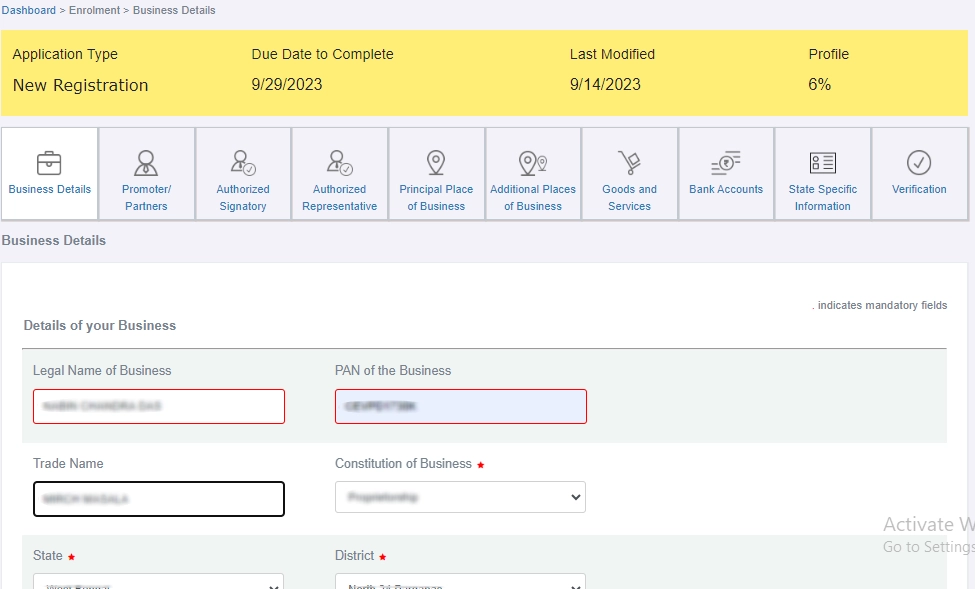
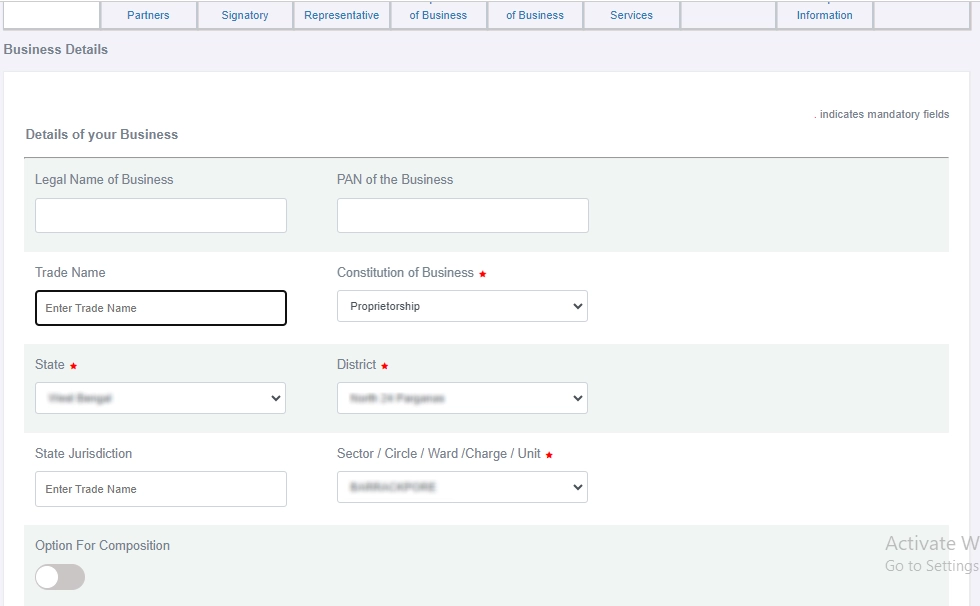
Step 6: Fill up the Promoter/Partners Details
The Entire Process: Fill the details step by step. Each tab need to be filled (from Business Details to Verification)
Step 6: Fill up the Authorized Signatory Details
The Entire Process: Fill the details step by step. Each tab need to be filled (from Business Details to Verification)
Step 7: Fill up the Authorized Representative Details
The most important step is to cross-check all the submitted details and review the information you entered.
Step 8: Fill up Principal Place of Business Details
The Entire Process: Fill the details step by step. Each tab need to be filled (from Business Details to Verification)
Step 9: Fill up the additional places of business details
The Entire Process: Fill the details step by step. Each tab need to be filled (from Business Details to Verification)
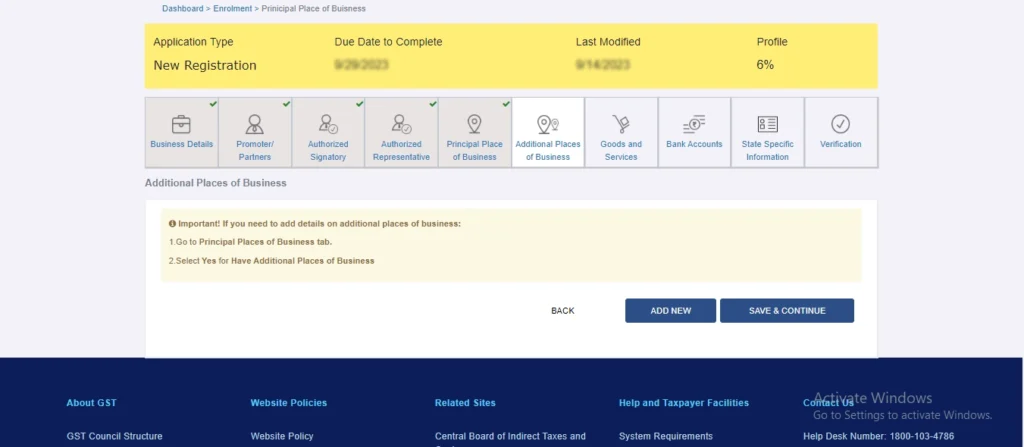
Step 10: Fill up the bank account details
Step 11: Fill up the state specific information details
Step 11: Complete the verification procedure
Now submit the application.
After submitting, you will receive ARN number for future reference. You can use ARN to track your registration process.
Now go to Services > Registration > Track Application Status
How to Check Your GST Registration Status?
Once you have applied for GST number registration, follow these steps to check your registration status
- Go to the GST portal: https://www.gst.gov.in/
- Move to “Services” > “Registration” > “Track Application Status.”
- Type your Application Reference Number (ARN) and the security code.
- Click “SEARCH.”
The following are the results you can see :
- Pending for processing: The Tax Officer will process it.
- Pending Verification/Clarification: Check your registered email ID to find the existing issues in your registration.
- Rejected/Cancelled: Go through your application if it was rejected and reapply it.
- Approved: Once your application is approved your application and you have been allotted GST number.
How to Download the GST Registration Certificate?
After completing the GST registration process ,you can download your GST Registration Certificate, also known as Form GST REG-06. Let’s follow these simple steps:
- Log in to the GST Portal
- Visit the official GST portal – https://www.gst.gov.in/.
- Once you reach the website homepage ,click on “Login” situated in the top right corner of the homepage.
- Type your username and password and verify it with the captcha code.
- Finally, click on “Login”.
- Access Certificates
- After the login is completed ,go to the Services section located on the top menu bar.
- Under “Services” then go to”User Services” and then select “View/ Download Certificate”.
- Download your Certificate
- All the issued certificates are available here to view.
- Find your GST registration certificate that is listed with the name”Registration Certificate (Form GST REG-06)” or a similar name.
- Click on the “Download” icon next to the certificate.
- Your certificate is available in PDF format.
- You can open and save the downloaded PDF for future reference.
Learn more to enhance your skill sets. Go through the GST articles here
GST Registration Benefits
- Legitimate Business Operation: As a business ,getting registered under the GST scheme will help to get legal recognition. It helps you in boosting trust with customers and suppliers as well.
- Input Tax Credit (ITC): The most important part is getting back your taxes that you paid on your purchases (called Input Tax Credit). It reduces your total tax liability.
- Interstate Transactions: More flexible business opportunities across different states.
- Government Benefits: Be eligible for government schemes and benefits exclusive to registered businesses.
Conclusion
In the end ,businesses by completing the GST registration process can achieve lots of benefits in terms of growth, scalability, smooth operations, reduced tax liability, and more on the list. It is the first key to financial growth and unlocking success in the entire business journey.
- Top 20 Journal Entries Questions And Answers For Interview - November 8, 2024
- Accounts Payable Process in SAP: Step by Step Guide - August 23, 2024
- Capital and Revenue Transactions: Understand the Basics - August 16, 2024

.jpg)














